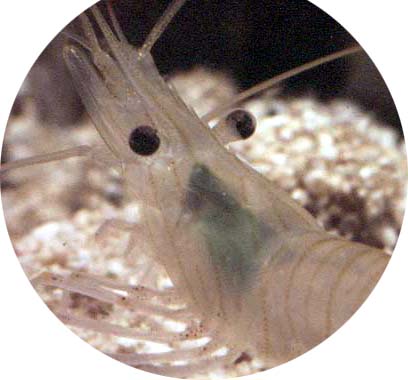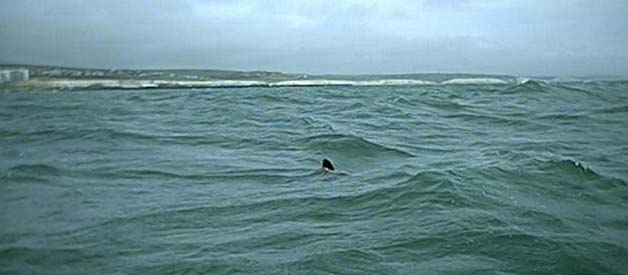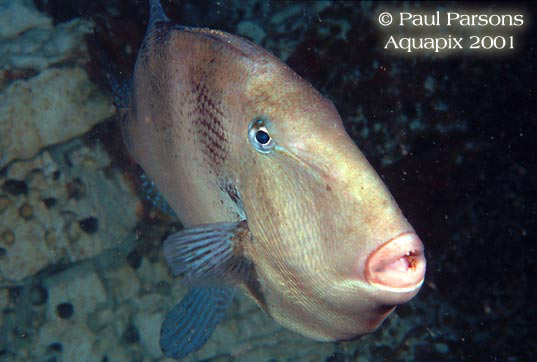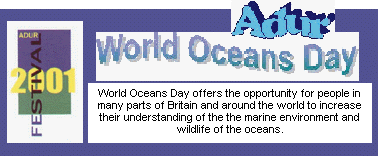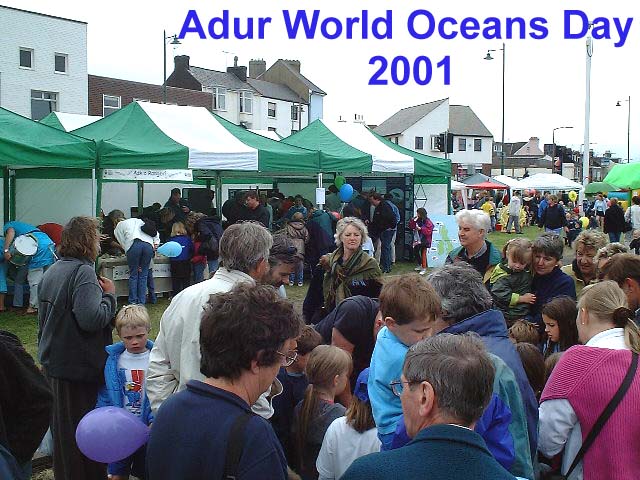 |
|
|
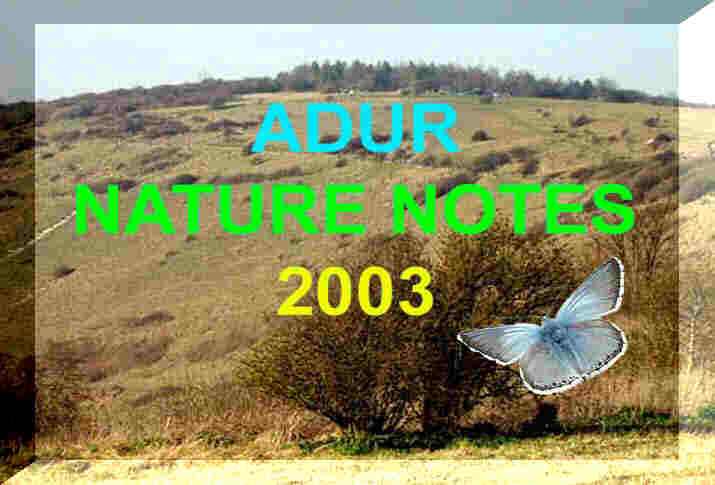 |
|
(ADUR VALLEY & DOWNS) |
|
|
Sussex: The Sea

Tub
Gurnard,
Chelidonichthys
lucerna
Photograph
by Paul
Parsons
MARINE LIFE NEWS
29 January 2004
A "skein" of dolphins were observed in the sea off Widewater Lagoon, Lancing, Sussex at 2:00 pm in the afternoon. This was an unusual event off the Sussex coast and most occasional observations have been in the summer months. Pods of dolphins have been seen off Selsey Bill, West Sussex in the last few days. "Skein" is the term used by the observer and I have not known this collective noun used before.Hearsay Report by Brian Street (Shoreham)British Marine Life Study Society News Reports Winter 2004
Adur Valley Nature Notes (January 2004)
BMLSS Cetacea5 December 2003
A Little Auk settled on the sea off Widewater Lagoon at 1:00 pm.Report by Stanley Allen (Shoreham & District Ornithological Society)
on Sussex Ornithological News
24 November 2003
There were a couple of birdwatchers on the shingle beach at Shoreham each with high powered scopes on rigid tripods (the stability is important even in a gentle breeze) looking out to sea. One of them reported thirty or so Guillemots and Razorbills flying past. Auks fly past during the winter months but it is difficult to identify them from the shore.18 October 2003
A single Mute Swan was drifting with the current offshore of Widewater Lagoon. It is uncommon to see Mute Swans on the sea itself.16 October 2003
A dead dolphin is washed ashore on Brighton beach at approximately 3.00 pm. The report initially came to me from a local restaurant owner (who had received information earlier in the year to increase public awareness and participation, including our hotline number, as part of our cetacean data logger pilot project).
National Whale and Dolphin Watch
East Sussex Wildlife Rescue and Ambulance Service were able to secure a line around the dolphin and pull it from the sea and up the steep shingle slope of the beach.
The decomposing dolphin appeared to be a male and estimated to be about 3 metres long. At first glance it looked like a Bottle-nosed Dolphin however there was a patch of black skin behind the dorsal fin, which suggested it could have been a Striped Dolphin, which are occasionally washed ashore in Sussex.
Full ReportReport by Stephen Savage (Sea Watch Foundation)(Sussex County Recorder for Marine Mammals)BMLSS Cetacea
on the Marine Wildlife of the North-east Atlantic Ocean Group
and the Marine Mammal Group and UK Cetnet
11 October 2003
The SHOREHAM FISH FESTIVAL on Coronation Green, Shoreham-by-Sea, West Sussex, was attended by an estimated 4,000 people in the sunshine as the high six metre spring tide filled the river just before 1:00 pm. The British Marine Life Study Society held an aquarium display and despite technical problems with a very high plankton content in the water (which meant the large wrasse could not be displayed) the exhibits were well received by the younger age group.
This event was organised and run by Shoreham Fisheries Project (David Guy),
P O BOX 12, BRIGHTON, BN41 1WW
Email: shorehamfish@fsmail.net29 September 2003
Andy Horton appeared on BBC Southern Counties Radio to discuss the marine life of Sussex and the work of the British Marine Life Study Society.19 September 2003
I dived Shoreham beach by the Church of the Good Shepherd in the early evening and saw Cuttlefish of all sizes, Sepiola atlantica and some young squids possibly Loligo vulgaris. Also shoals of Sand Smelt, Tub Gurnard,Undulate Ray, Plaice and Sole, Bass and gobies!Report by Paul Parsons
c. 17 September 2003
A specimen of the nudibranch Thecacera pennigera is observed on the Brooklands sea outfall pipe, on the Lancing/Worthing border, West Sussex. This small sea slug is probably overlooked and of a sporadic occurrence rather than uncommon, but this is the first record I have for the local coast, and I have never seen one on the shore, where it would be notable.Report by David Cropp via Paul ParsonsBMLSS Nudibranchia14 September 2003
Off Worthing, on a shallow water dive site known as the Worthing Lumps, a small school of Rock Cooks (Small-mouth Wrasse), Centrolabrus exoletus, were seen shyly swimming by the rock face, quite unlike the bolder Corkwing, Symphodus melops (=Crenilabrus), and Goldsinny Wrasse, Centrolabrus rupestris.Rock Cooks (Small-mouth Wrasse), Centrolabrus exoletus
Photograph by Paul ParsonsThese inconspicuous wrasse have not been recorded off the Sussex coast before and the books state that is fish is only known from the southern and western coasts of Britain. They may have been overlooked, but they are certainly not a common occurrence. There have been no records of juvenile fish in Sussex rock pools, where the Corkwing first year fish are very common and Ballan Wrasse, Labrus bergylta, juveniles occasionally discovered.
Report by Paul Parsons (Sompting)BMLSS Wrasse
BMLSS News 2003
3 September 2003
A large whale skull was landed at Shoreham (Monteum's Wharf, River Adur) from a small (under 10 metres length) trawler fishing three miles off Brighton Marina, Sussex.Further Details and Photographs The whale skull was eventually identified as that of the Fin Whale,Balaenoptera physalis.
Report by Dr Gerald Legg (Booth Museum)BMLSS Cetacea8-9 August 2003
Whilst travelling out from Littlehampton marina on Friday night, we passed four very large Rhizostoma octopus and counted 21 Compass Jellyfish, Chrysaora hysoscella, over a period of an hour.Rhizostoma octopus (=R. pulmo)
Photograph by Paul ParsonsOn Saturday morning we went armed with cameras. Within 20 minutes we had found three Rhizostomas. The last two were close enough to see the juvenile fish swimming alongside. We dived with the third Rhizostoma for about 30 minutes. It stayed within the top three metres of water.
We saw a third as we headed back to the marina on a different heading.
We also spotted eight Compass Jellyfish.Report by Paul Parsons
The sea was exceptionally clear and several large (40 cm + in diameter) Rhizostoma octopus were seen off Littlehampton.Report by Brian Street
5 August 2003
It was the hottest day of the new millennium when the temperature reached 30.6° C at 5:57 pm with a gentle breeze. Humidity fell to 39% so it was quite pleasant outside.
Shoreham Beach Weather StationNot surprising with the warm weather, many people who are not at work and children on holiday made their way to the beach where the estimated sea temperature was 19° C, possibly rising to 21° C inshore over sand. Weever Fish are around and there were several reports of people being stung by this fish that lives in the sand with its venomous black dorsal fin sticking above the surface on which the bather may have the misfortune to step on.
After being sting by large Weevers the pain is described as excruciating for the first two hours after which it subsides and rarely causes permanent injury. The pain can be relieved by immersing the foot in hot water at 40° C. This fish is common on sandy coasts all around Britain.
Report by Jamie Hailstone (Shoreham Herald) with commentary by Andy Horton.Beware of the Weever Fish18 July 2003
There are loads (probably over a thousand) of Moon Jellyfish, Aurelia aurita, in Shoreham harbour, with the four pink rings (the gonads) visible in many specimens.
9 July 2003
Night Dive
Fifty young Cuttlefish, Sepia officinalis, merged from their black egg cases in shallow water by the Brooklands outfall pipe, at the east Worthing/Lancing border. A large Little Cuttlefish, Sepiola atlantica, was feeding on a worm and then a beautiful Squid danced in front of my torch. There were many Eels and Bass amongst an amazing variety of juvenile fish: Bib (Pouting), Plaice, Sole and Pollack.Report by Paul Parsons
5 July 2003
Evening
We dived off of the Church of the Good Shepherd, Shoreham Beach, in an area we are familiar with. There were areas that appeared like the chalk bedrock was exposed under the sand but on closer inspection was white sand? The Ragworm casts were an unusual marbled mixture of colours. The reef there was particularly stony last October 2002 but now we only see a few pebbles. The "weed" growth is still in the same area.We saw two Common Eels but they were buried in the sand with just their heads sticking out. I have never seen this behaviour before. Whilst photographing the Eels I discovered that the sand was in fact a soft black mud which you could push your whole hand into, easily up to my wrist.
We saw only two young Undulate Rays. We also saw a juvenile Lumpsucker 10 mm long. with some Plaice, Sole, female Corkwing Wrasse, and a beautiful shoal of silvery herring or sprats (40 mm long ). My buddy helped a baby Cuttlefish escape from its small black egg.
Three species of sea anemone were spotted: many Sagartia troglodytes, Dahlia Anemones (10) and two Snakelocks Anemones. At a depth of four metres, the sandy areas within the weed had many exposed Sand Mason worms but the sand appeared as if it had been "brushed" all in the same direction. There were Edible Crabs and large Shore Crabs, and a display of the attractive Peacock Worms, but on the whole the reef was fairly lifeless compared to other dive sites off the Sussex coast.
Report by Paul Parsons26 June 2003
I caught a Twaite Shad, Alosa fallax, from off the beach at Brighton.

Twaite Shad (click on the image for a closer look)
"It was about 48 cm long and like an oversized herring. Its scales were very large (I kept some as they came off easily on handling).
Report by angler Gareth Stevens
The Twaite Shad is a rare endangered migratory fish rarely caught in the English Channel. It is the commoner of the two shad species found in British waters. The other species is the Allis Shad, Alosa alosa.
Both the Twaite Shad and the Allis Shad are listed on Appendix II of the Bern Convention and Annexes II and V of the Habitats Directive. They are protected under Schedule 5 of the Wildlife & Countryside Act 1981.
Further Information and Later Report19 June 2003
SHRIMPING FOR FOOD AND FUN
Local shrimper Peter Talbot-Elsden, from Southwick, has produced a small booklet called “Shrimping for Food and Fun” about catching the brown shrimp around the coasts of Britain. The shrimps are caught in nets and the book features the various methods, firstly the push-netting seen over the sand in shallow water in spring off Southwick, Shoreham and Lancing. The famous Morecambe Bay shrimps were originally captured by cart shanker shrimping with a horse and cart in deeper water off the Lancashire coast, later replaced by a tractor. At Formby, they experimented with amphibious vehicles after World War II. Nowadays, most commercial shrimping on the east coast around King’s Lynn trawls from small boats using a net off the stern. Shrimps are often cooked on board.
The 28 page book contains 40 photographs of shrimping through the ages. It is available through Bookworms of Shoreham and other local booksellers at £3.50.
The booklet is also available through the British Marine Life Study Society, but at £4 including postage and packing.Peter Talbot-Elsden manned the shrimp display at Adur World Oceans Day.
14 June 2003
A jellyfish with a bell diameter of 45 cm and one metre long was spotted off Shoreham-by-Sea, Sussex, at 7:00 pm. It was creamy white with a pink-blue rim so it was almost certainly the Barrel Jellyfish, Rhizostoma octopus. These large jellyfish are only occasionally encountered off the Sussex coast.Report by Tim Worsfield (Shoreham)
4 June 2003
Small Weever fish were discovered in the shrimp net (push-net) haul in the sea off Widewater beach. Weever fish are silvery with a black venomous fin and spines. The can impart a nasty sting on the unwary and bare foot paddler over the sandy shallows.Report by RussellBeware of the Weever page3 June 2003
The famous Boar Fish, Capros aper, died after its aquarium sprung a leak in the middle of the night. (It was caught in November 2002).
31 May 2003
Shoreham bathed in a heat wave up to 24° C for the opening of the Adur Festival and Adur World Oceans Day 2003 on Coronation Green, Shoreham-by-Sea. About 3000 people attended the event that was steady and busy throughout.
Exhibits included live fish and lobster in aquaria, colouring and badge-making, whales and dolphins, birds, shrimps, fish-tasting, touch-table, Shoreham shingle beach flora and undersea colour photographs and videos.A special thanks to all the participants, especially Len Nevell (British Marine Life Study Society) and Steve Trewhella (Marine Conservation Society). The inflated dolphin was provided by Steve Savage (Sea Watch Foundation).
Several groups had special exhibitions including the:
British Marine Life Study Society including Shorewatch (four exhibits)
West Sussex County Council Countryside Unit
Sea Watch Foundation (for Whales & Dolphins)
Sussex Sea Fisheries District Committee
Sea Search (Undersea Biological Recording)
Shoreham & District Ornithological Society
Sussex Ornithological Society
Adur World Oceans Day 2003
10:00 am - 4:00 pm
Popular Information File on Adur World Oceans Day 2003
Acrobat Information File on Adur World Oceans Day 200319 March 2003
The low equinoctial spring tide receded as far as I have known it uncovering all the rocks on Lancing Beach. It was too dark to explore the exposed shore properly, but juvenile Small-headed Clingfishes (probable ident.) were present under rocks, with hundreds of crabs and a chiton, a full sized Acanthochitona crinita. The chiton is 29 mm long and 20 mm at its widest part. The sea anemone Sagartia troglodytes was common and the Snakelocks Anemone frequently seen.Species List
BMLSS Chiton page
BMLSS MolluscsPhyllodoce maculata The green blobs are the egg case of a worm
5 November 2002
Lancing BeachCollecting a few rocks for aquarium props in fading light, a moonless evening under torchlight, there were dozens of Squat Lobsters, Galathea squamifera, and at least one red-eyed Velvet Swimming Crab, Necora puber. I thought that I picked up two, but the following day, I noticed that the crab had pale blue eyes and this I now think may be a different crab altogether, Liocarcinus arcuatus, the Arch-fronted Swimming Crab which I have never discovered before, nor have I heard reported before from the shore. The identity of this crab has been confirmed by Dr. Reindert Nijland.
2 November 2002
The capture on rod and line by Peter Weight of a Boar Fish, Capros aper, from Hove beach is the very first record of this fish caught from the shore off Sussex. The books say that this fish lives in depths of over 100 metres and as there are no seas of this depth on the English side of the English Channel. This pretty little red and silver fish about 55 mm long, excluding its caudal fin, large eye and large mouth, with a spiky first dorsal and vibrating second dorsal and second anal fins (vibrating like the dorsal fin of a pipefish). Although this fish is rarely caught, it is abundant in deepish water (on the edge of the continental shelf in the western approaches of the English Channel) and it is just that normal fishing methods do not capture this small fish. All records and especially all live records from the shore or on dives, and all Sussex records are newsworthy.This fish is thriving in the BMLSS private aquarium (Shoreham-by-Sea). This fish is rarely on display in British Public Aquaria and the only known display of this fish was for several years at Mevagissey Harbour Aquarium.
Previous Sussex Record of a Boar Fish
Previous Report from the Channel Islands
BMLSS Boar Fish6 October 2002
With Indian Summer summer preceding some of the highest and lowest equinoctial spring tides for over 20 years was too good a rockpooling chance to miss as low tide receded to Chart Datum about 6:00 pm, just before an attractive red sunset.
The low tide on Lancing beach revealed shallow pools and rocks covered in weed, but it was the push-net in shallow water that provided the most interesting discoveries including an attractive Little Cuttlefish, Sepiola, that squirted five dollops of ink in the temporary aquarium, and my very first discovery of the South-claw Hermit Crab, Diogenes pugilator, on the Sussex coast. A 5-Bearded Rockling discovered by Jan Hamblett in a shallow pool on Lancing beach was over 20 cm in length.
Full Report Link
Previous Seal Report 2002
5 October 2002
Down the beach this morning to check the sea state for diving when I noticed I was being watched by a seal, bobbing in front of me. I first saw it in the surge five metres from the shore, in front of the new sea defence works, east of the Widewater Lagoon. A fisherman in a boat must have just passed the seal moments before I had arrived, maybe he gave the seal some titbits?
It was a Harbour (Common) Seal, Phoca vitulina, as I have photographed Grey Seals many times and this seal is different.
BMLSS Seals
Grey Seal Report 1996
Lancing Beach Reports25 September 2002
Off Lancing beach on the seaward side of Widewater, four Undulate Rays, Raja undulata, were seen in the shallow water.Report by Paul ParsonsBMLSS Sharks and Rays
22 September 2002
Two Thornback Rays, Raja clavata, 300 mm across the wings were seen in very shallow water (3 metres depth ) off Shoreham beach.
Also an overfriendly Greater Pipefish, Syngnathus acus, which coiled around my friends neck, then swam straight into the camera, then swam up to the surface where its mouth came up out of the water!
On two night dives beneath the Palace Pier, Brighton, we found small groups of Squid, Alloteuthis subulata. Their colours changed very quickly from white/transparent to speckled red. Many (20) Little Cuttles, Sepiola atlantica, were seen with a pair were captured on film possibly mating or fighting?
A red Tub Gurnard, Chelidonichthys lucerna, was seen under the Palace Pier.
And finally by sliding my hand under its belly, Lesser Weever fish Echiichthys vipera: I counted a good dozen in approximately two square metres, quite worrying as I had my hand on the sand to steady myself whilst photographing Little Cuttles.
BMLSS Octopuses and Squids28 August 2002
From the Palace Pier, Brighton, we saw two jellyfish moving very slowly. They were very large we estimated them to be about 130 cm (4-5 feet) in a diameter, a large white dome, medusa with a dark rim, with strange white panel type of things below and then short pale blue tentacles. This is the species Rhizostoma octopus.
NB. this size may be overestimated.Report by Kelly TebbOn 26 August 2002 a species of this jellyfish was seen at a depth of 6 metres over 15 metres of water at the Waldrons, off Littlehampton, Sussex.Report by Paul ParsonsBMLSS Jellyfish23 August 2002
Sussex Marine Life
A seal, probably a Common (or Harbour) Seal, Phoca vitulina, is spotted off Lancing beach between the breakwaters at high tide by the Golden Sands Caravan Park. It was mistaken for a dog at first which is often the case. Seals are a rare sight off the mid-Sussex coast, but a few have been seen off Shoreham beach before. The nearest rookery is a small group of seals in Chichester harbour which are occasionally seen around Selsey (Seal Island).
BMLSS Seals27 - 28 July 2002
National Whale and Dolphin Watch Weekend
http://www.seawatchfoundation.org.uk/events.htm
Click here for full details of the National Whale and Dolphin Watching Weekend and how you can get involved.The Sea Watch Foundation are inviting you to take part in the UK's first ever National Whale and Dolphin Watch Weekend, aimed at providing a snapshot picture of the numbers and variety of whales, dolphins and porpoises to be seen around the British Isles.
Sussex Sightings
Harbour Porpoises were seen from the Brighton Marina on the 28 July 2002 by a Sea Watch Volunteer Helena Ellis. A group of Harbour Porpoises best group size estimate 4 (minimum size 3 maximum size 6) were seen offshore for 3 minutes passing the Marina in a NW direction. About an hour later at 11.30 am, a group of 6 Harbour Porpoises were seen heading west (possibly the same group). They then changed direction several times, eventually heading towards the shore and were observed for about 30 minutes. It appears that they might be feeding, Small fish were observed leaping out of the water and anglers also caught a few Mackerel.
No sightings were made during the five and a half hour group watch that I ran from the same site the previous day (27 July 2002). No sightings were recorded
by the Eastbourne group watch on Sunday 28 July 2002.
20 July 2002
The first indication was the noise of the dolphins "blowing-out" as three grey-black dolphins appeared at the side of the yacht, in the morning, about three miles off Littlehampton, Sussex, in an area where the small fishing boats were tending their nets. Mike Smith identified them as Bottle-nosed Dolphins, Tursiops truncatus, very much slower than the dashing "more zappy" dolphins of the Bay of Biscay that leap and dived at great speed. These Sussex dolphins remained alongside the yacht in a calm sea for about 15 minutes.Report by Brian StreetBMLSS Cetacea
June 2002
An American Lobster, Homarus americanus, was discovered captured by a fishing vessel on a boat out of Selsey, West Sussex. A few specimens have been caught before in the approaches to Southampton Water.Report by Robert Clark (Sussex Sea Fisheries Committee)BMLSS American Lobsters13 June 2002
A Basking Shark was spotted off Brighton Marina by the Fisheries Protection Vessel "Sea Harrier" (Sussex Sea Fisheries Committee).
Report by Robert Clark (Sussex Sea Fisheries Committee)
1 June 2002
Adur WORLD OCEANS DAY Exhibition at Coronation Green, Shoreham-by-Sea.
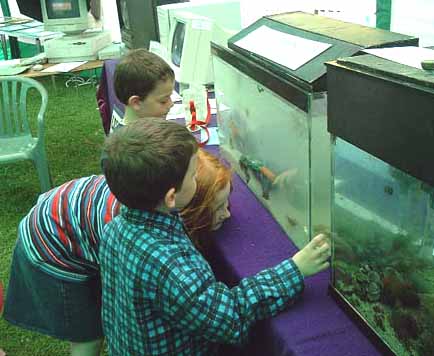
Adur was one of the leaders in the United Kingdom when it presented an Exhibition celebrating the official World Oceans Day. The event took place on Saturday 1 June 2002 in Shoreham-by-Sea, on Coronation Green (TQ 216050), adjacent to the footbridge over the River Adur, with the start of the Adur Festival.CLICK ON THE IMAGE ABOVE FOR MORE INFORMATION
Adur World Oceans Day Picture Portfolio 2002 (by Ray Hamblett)
Adur World Oceans Day 2002 Programme of EventsAdur World Oceans Day 2001 Report
Adur World Oceans Day Picture Portfolio
World Oceans Day Smart Group27 May 2002
A pod of dolphins, probably Bottle-nosed Dolphins, were seen off Lancing beach. They appeared dark in colour, described as black rather than the grey of the life-sized artificial dolphin on display at Adur World Oceans Day 2002.Report by Russell at Adur World Oceans Day 2002BMLSS Whales and Dolphins
Sussex Dolphins
Sea Watch FoundationJanuary 2002
Two dead cetacean strandings in Sussex in recent days, one Harbour Porpoise (fresh) and a decomposed specimen of dolphin, as yet unidentified. Following the dead strandings at Cornwall earlier in the year, dolphins/porpoise are being washed up in an easterly direction.Report by Stephen SavageNational Report
(Sussex Co-ordinator Sea Watch Foundation, Sussex County Recorder Sea Mammals, Regional Rescue Co-ordinator Southern Marine Life Rescue.)
26
December 2001
A
large number of Dabs,
Limanda limanda,
were caught by Jeff, an
angler off Shoreham Harbour Arm, a least 10 over 30 cm long were taken
home as large enough to make a decent meal. This flatfish are caught until
February inshore off Sussex. Smaller fish were also caught.
BMLSS
Fish Page
25
November 2001
A
seal
was seen off Brighton beach, Sussex in the English Channel. This is outside
the normal range of all species of pinnipeds. It was swimming between Brighton's
two piers heading east to west. The seal swam at the surface and dived
on occasions and appeared to be in good health. They have been seen as
occasional vagrants before, notably off Shoreham
a few miles to the west.
Seal Conservation Society
British Marine Life Study Society News 2001
18
November 2001
Triggerfish,
Balistes capriscus, in fine condition were discovered inhabiting part
of the undersea chalk cliff face known as the Worthing Lumps, about 3 miles
off the Sussex coast. About 15 adult fish
were found, most of them inhabiting the rock crannies in the clear cold
(12° C) water, but one fish ventured
out into the open. Divers rarely have the opportunity
to observe Triggerfish in the winter because of the inclement weather restricts
the diving opportunities.
Excellent
photographs and Triggerfish information page (link)
18 November 2001
A Sea Scorpion (Bullhead), Taurulus bubalis, shown in the photograph above, with strong colours and patches of white, on the undersea chalk cliff face known as the Worthing Lumps, about 3 miles off the Sussex coast.
20
August 2001
A
small badly damaged specimen of the Scorpion
Spider Crab,
Inachus phalangium,
was my first confirmed record from the Sussex shore, although it is frequently
discovered in shallow water offshore. This is a small species of long-legged
crab that often associates with
sea anemones. (TQ
235 047)
July
2001
The
crew of the Sussex Sea Fisheries
Protection vessel "Watchful" spot a Bottle-nosed
Dolphin, Tursiops truncatus, in
the approaches to Shoreham harbour.
Sussex
Dolphins
11
June 2001
Offshore
from Brooklands Boating Lake, (1 mile east of Worthing
Pier) Common Terns,
with their distinctive forked tails, swept low over the sea that was showing
the first signs of white horses, and descended to take a feed from just
below the surface in one swift swoop. Black-headed
Gulls, in breeding livery with a completely
dark (brown) head, were attempting the same manoeuvre without the same
elegance. A half dozen Cormorantscongregated
around the post marking the outlet pipe, occasionally diving under. This
is a regular flocking area for these fish eating birds with frequently
up to 29 birds that can be quickly counted.
Under
the sea, Paul Parsons returned from a brief foray with a handful of very
small Actinothoe
sea anemones, a small (sacoglassan sea slug) sea hare Elysia
viridis, and some other very small
orange anemones with whitish orange tentacles. After close study I think
these are the often overlooked Diadumene cincta.
The mouth is orange in some specimens, but the most useful diagnostic difference
from the similar Plumose Anemones is their instant
jerky reaction when touched.
21
May 2001
The
ctenophore (comb-jelly) Sea Gooseberry,
Pleurobrachia
pileus,
is both ubiquitous and superabundant pelagically in the NE Atlantic Ocean,
but on the low springs (0.4 metre) at Kingston beach
in the early evening was only the second time that I have actually discovered
this animal that appears as transparent globules in the prawn
net. In a miniature aquarium, the two long
tentacles tangle underneath and the swimming combs of this tiny ovoid predator
appear to shimmer. At night it is phosphorescent.
Marine
Wildlife of the North-east Atlantic Ocean Group
Image
23
April 2001
The
elongate small fish known as the Butterfish,
because of its slippery nature, or Gunnel (misspelling of gunwhale), Pholis
gunnellus, were present on Kingston beach
on the low spring tide.
 3
February 2001
3
February 2001
The
sea anemone Diadumene cincta
has been identified and photographed by Paul Parsons off Worthing at a
depth of 3 metres and they possibly occur off Shoreham as well. It is a
small sea anemone that has probably overlooked before or incorrectly identified.
The colony found was very small.
Photographs
26
October 2000
Portuguese
Man-o'-War, Physalia
physalis,
are discovered washed up on the Sussex coast at Brighton.
This has happened before, but not in the last 20 years. About 50 were discovered,
but there were likely to be more.

Portuguese
Man o'War
6 August
2000
Large
Bass,
up to 2 kg, cruised into the entrance of Shoreham Harbour, (TQ 235 048)
scattering the shoals of Sand Smelt,
Atherina
presbyter. The anglers were catching the attractively patterned Sand
Smelt at a length of 16 cm (excluding the caudal fin).
Swarms
of Moon
Jellyfish, Aurelia aurita, are in Shoreham harbour.
A
small pod of Dolphins were spotted near Hove Lagoon.
Link
to Sussex Dolphins Page
1 August
2000
TheMarine
Wildlife Forum of the NE Atlantic commences.
2 June
200
World
Oceans Day 2000 (at Shoreham)
Click
on the text for more information
1 February
1999
A 3 metres* long female Mako
Shark,
Isurus oxyrinchus, (the consensus
now seems that it is a Porbeagle) was caught three miles
off Brighton by cod fishermen and brought into Monteum Fish Market at nearby
Shoreham-by-Sea.
The shark weighed 172 kg (378
lb). The largest shark normally caught
in Sussex seas is the Tope, Galeorhinus
galeus, and then only occasionally. Rarely Porbeagle Sharks,
Lamna
nasus, have even been caught, but this is my first report of a Mako.
Reported
in the Shoreham Herald.
[*
One report said 2.2 metres, excluding the tail fin?]
Shark
Page
Letter
to Shoreham Herald
PS:
On further examination the shark looks like a Porbeagle. Andy
Horton 11/2/99.
Further
investigation underway.
 Shark
teeth
Shark
teeth
The
consensus now seems that it is a Porbeagle.
Doug
Herdson, Marcus Goodsir, Pål Enger, Steve Barker & others. 16/2/99.
5
Porbeagle Sharks were landed at the fish market in Plymouth from September
1998 to February 1999, the largest being a female of 243 cm (115 kg). Doug
Herdson.
The
Porbeagle has a secondary caudal keel. The Mako is a southern species,
whereas the Porbeagle is a temperate water species and found all around
the British Isles.
Porbeagle
Sharks in the News 1998
August 1998: Large Bass continue to be taken from the shore and piers at Shoreham-by-Sea, Sussex. The latest weighed 6.35 kg (14 lb).
6 December
1997. A Sea Bass, Dicentrarchus labrax,
weighing 7.94 kg (17 lb 8 oz) was caught on rod and line
by Thang Nguyrn of Shoreham-by-Sea from Brighton Marina. This is a very
large Bass.
August
1998.
An
Electric
Ray,
Torpedo nobiliana, was caught with some difficulty, because
the powerful electric shocks transmitted up the line, by angler Steve
Alnutt off Shoreham Beach, Sussex. It weighed
8 kg (18 lb) and was returned alive.
BMLSS
Sharks & Rays
A Common Dolphin, Delphinus delphis, was trapped in Emsworth Harbour, West Sussex on 10 January 1997. The Southern Marine Life Rescue (Andy Williams) and RSPB attended.

MARINE WILDLIFE OF THE NORTH-EAST ATLANTIC OCEAN (LINK TO EFORUM PAGE) |
LINK
FOR MORE INFORMATION ON JOINING THE EFORUM
(CLICK
ON THIS TEXT)
Local Wildlife Links (SE England)
Adur
& the Downs: Protected Sites
Adur
Valley Nature Notes
Adur
Valley Wildlife
Adur
Valley Wildlife Gallery
Dolphins
off Sussex
Dungeness,
Kent, England
Lancing
Ring
Orford
Ness: Coastal Ecology of a Shingle Bank (excellent references)
Ralph
Hollins Nature Pages (Chichester Harbour area)
Rye
Harbour Nature Reserve
Rockpooling
Page
Seashore
Page
Shingle
Coast (Coastal Fringe of Shoreham Beach)
Shoreham-by-Sea
Wildlife Page
Tides
Unusual
Sussex Fish Discoveries
Worthing
Pier (Undersea world underneath the pier)
|
|
|
|
|
Copyright © Andy Horton 1997-2002
